0 Introduction
The primary objective of the controller used in the load frequency control of power systems is to make system power generation meet the load demand.With dynamic changes occurring in system power generation and load demand, system frequency fluctuations have to be maintained within a safe range.Nowadays, with Smart grid development and competitive electricity markets, load dispatch changes in generators are becoming increasingly frequent.Generation cost reduction and power quality improvement are the main factors that the controller has to consider.Automatic generation control (AGC) is conventionally used to regulate system frequency and balance system power generation and consumption.However, AGC, which is based on area control error, has a decentralized structure.Thus, the economic dispatch of load among different areas fed by the power system may be abandoned by the AGC controller.Optimal load frequency control has been proposed to combine secondary control and load dispatch in the tertiary layer [1, 2].Economic optimization in real-time and transient control on a fast time scale will improve the control performance of a power system [3].During load frequency control and optimal load dispatch in multiarea power systems operating within a dynamic electricity market, the control performance of the power systems will deteriorate if a controller with a long convergence time is used [4].Moreover, the finitetime control strategy has better robustness, more accuracy compared with a controller having a long convergence time.Therefore, to accommodate the requirements of dynamic electricity markets and load demand, a controller with finitetime convergence will be required for a multi-area power system.
Model predictive control (MPC) is a control strategy based on optimal theory [5].Because of its excellent control performance and ability to deal with constraints,it has received considerable attention in both theoretical research and practical applications [6].Traditionally, power system optimization and control have been realized using hierarchical control.Economic optimization, which is called tertiary optimization in power systems, is addressed in the upper layer.The lower layer tracks the optimal solution given by the upper layer where the MPC strategy is usually adopted.As the computing power of the controller will increase, a real-time solution to complex optimization problems can be realized.Thus, some researchers have attempted to achieve power system control and optimization through one layer and realize real-time regulation of the system, and for doing this they used economic MPC.The application of economic MPC in modern power systems is shown in Fig.1.In [7], load frequency control and tertiary optimization of an interconnected power system are addressed by using economic MPC, leading to a considerable improvement in the transient optimization performance of the system.In [8], the optimization and control of an ultra-supercritical boiler-turbine unit are presented, and a nonlinearity model is addressed in the economic MPC controller.In this paper, an economic MPC algorithm is proposed for the optimization and process control of multiarea power systems.
The theory of economic MPC has been developed in recent years.Various approaches have proved that a power system with economic MPC is asymptotically stable [9].Moreover, few studies have also been conducted on the finite-time convergence of a power system subjected to economic MPC.As the convergence time of economic MPC increases, the control performance and robustness of the controller deteriorate.In contrast, finite-time convergence of economic MPC improves the control performance of a power system operating within a dynamic electricity market.In [10], finite-time optimal energy resource allocation is presented, and optimal dispatch convergence is achieved using an arbitrary topology.The generalized terminal penalty constraint is investigated in [11], and the system is found to converge within a finite time.In this paper, a finitetime economic MPC algorithm is proposed to realize finitetime convergence of system states.
Motivated by the above research, a finite-time economic MPC strategy is presented in this paper to achieve frequency control and optimal load dispatch of power systems.The main contributions of this paper are as follows: 1) Economic MPC is designed to facilitate load dispatch and frequency regulation in multi-area power systems.A controller optimizes the general stage cost function to improve the transient control performance of the systems.2) Finite-time system convergence is achieved using generalized terminal penalty constraints.The performance of the algorithm is verified in a two-area interconnected power system.
The paper is structured as follows: In Section 1, a model of the two-area power system is described.In Section 2, the proposed finite-time economic MPC algorithm is presented.In Section 3, the simulation results are discussed while in Section 4, conclusions are presented.
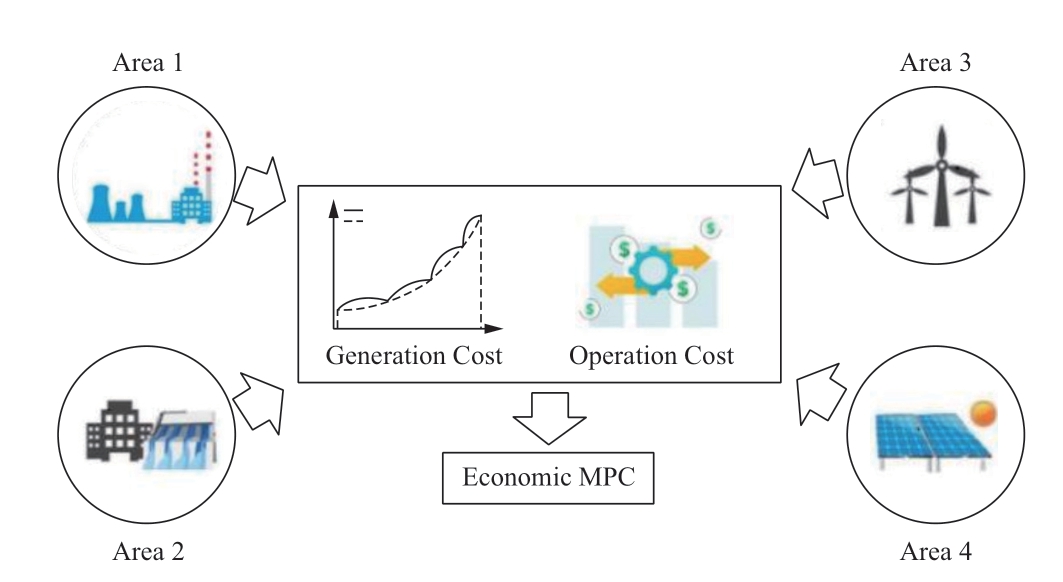
Fig.1 Application of economic model predictive control in modern power systems
1 System model
Fig.2 presents the structure of a two-area power system.The areas of the power system with diverse sources are interconnected by an AC tie line.

Fig.2 Structure of a two-area power system connected by an AC tie line
The system dynamics model of each area under load frequency control is presented in Fig.3.The model can be expressed as follows:
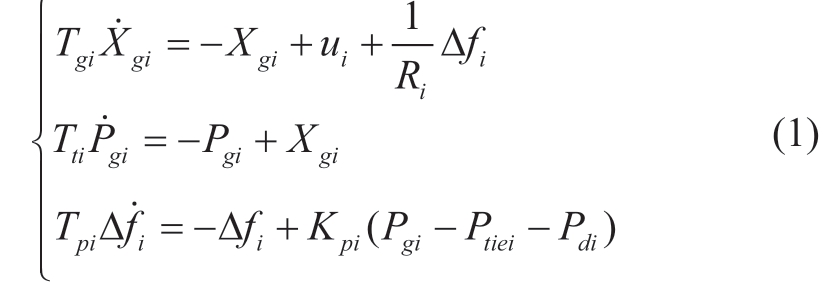
where Tgi, Tti, and Tpi are the time constants of the three components, Kpi is the power system gain, Tti is the governor output, Pgi is the turbine output, Δfi is the frequency deviation, ui is the controller output, Pdi is the load demand,and Ptiei is the power transmitted along the tie line.The power exchanged between the two areas, Ptiei, is related to the voltage angle δi as indicated below.

where Ptie,ij is the power exchanged between the areas i and j, Vi is the system voltage, i, Xij is the reactance of the line between areas i and j, and Ni is the set of the area connected to the area i.Detailed descriptions of the parameters and variables used in Eq.(2) are given in [7].
In interconnected power systems, economic load dispatch and load frequency control receive considerable attention.To meet the load demand in each area, the power generated in that area and power dispatched from that area have to be coordinated.

Fig.3 Structure of a power system with load frequency control
The objectives of the controller are as follows: (1) To realize optimal load dispatch and frequency regulation in the system and (2) To achieve stable operation of the system (the controller steers the system to its steady state within a finite time).
According to [12], the generation cost can be formulated as
where ai, bi, and ci are coefficients.
Frequency regulation is used to ensure system stability and frequency deviation is the main system parameter that indicates whether the system is stable or not.The penalty term for frequency deviation used by the controller can be expressed as
where Qci is a positive coefficient.The relevant system constraints can be referred to in [7].
2 Algorithm description
MPC is an algorithm based on the optimal control theory and is a model-based control strategy.The MPC scheme is described in Fig.4.The discrete-time model of the entire system shown in Fig.1 can be expressed as
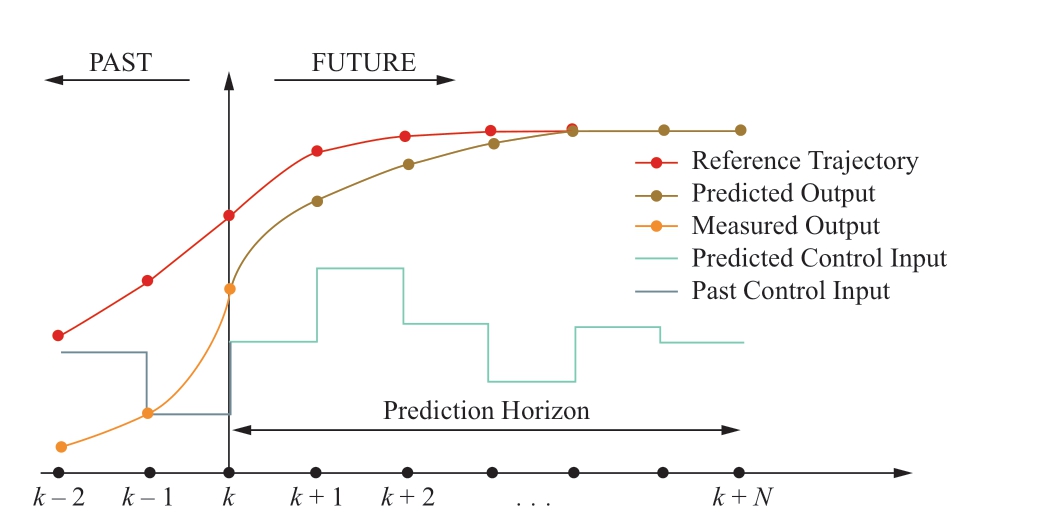
Fig.4 Structure of the model predictive control algorithm

The stage cost function, based on Eqs.(3) and (4),has the generalized form l(x, u).In the standard MPC, the tracking cost function satisfies the following condition:
where (xs, us) is the optimal control pair and input.In economic MPC, the stage cost function is not the traditional tracking target function and has a pair (xs, us) that meets the condition l(x, u)<l(xs, us).Therefore, we need to prove that the system is asymptotically stable when economic MPC is used.
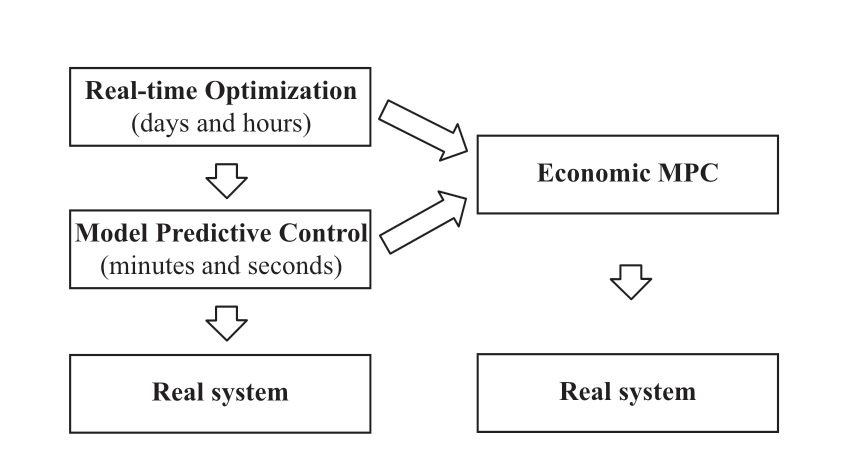
Fig.5 Comparison of tracking and economic model predictive control
In economic MPC, the stage cost function can be generalized.The difference between tracking MPC and economic MPC is shown in Fig.5.The objective function with the terminal state cost is

where u is the control sequence that requires optimization and lf is the terminal state penalty term that ensures the asymptotic stability of the system.Based on (7), the optimization problem of economic MPC can be defined as follows:
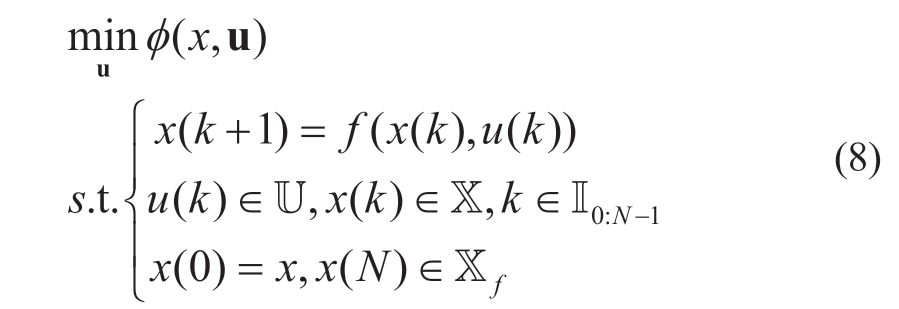
where x is the initial state, and Xf is the terminal region where xs is included.
The terminal state penalty has to be assumed when using the proposed algorithm to establish system stability.
Assumption 1: For ∀x∈ Xf, the control law is kf:Xf→U , and thus

According to [13], ∃( x , u) that l(x, u)<l(xs, us).Thus, the results of the convergence analysis of tracking MPC will not apply to economic MPC.
To prove the stability of the system when using the proposed algorithm, the following definition is made.
Definition 1: In System (5), the function λ satisfies the following condition:
Based on Definition 1, the rotated stage-cost function will be
where ∀( x , u) and L ( x ,u ) ≥0.The new cost function Φ( x , u) will be
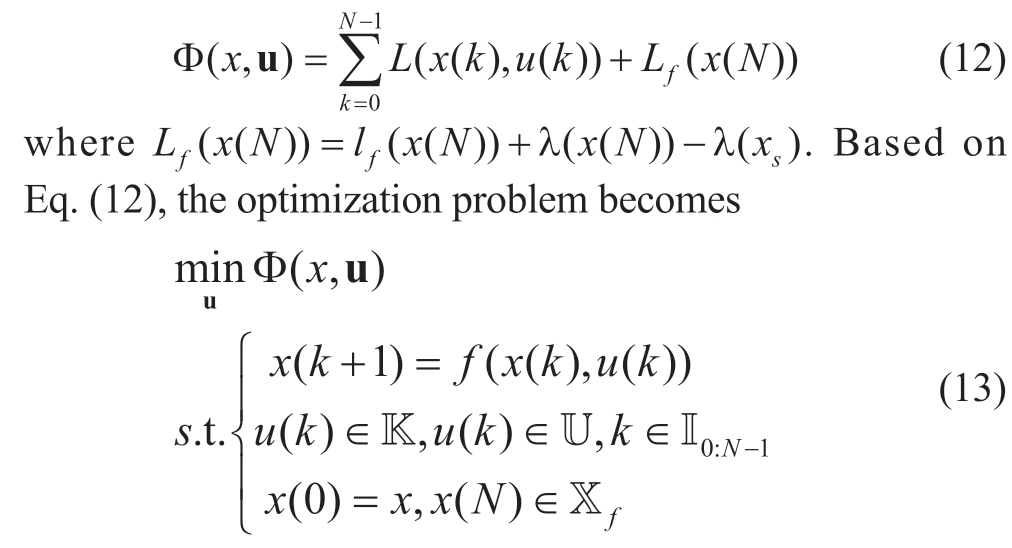
Because L(x,u)≥0 according to the auxiliary cost function and optimization problem expressed in Eqs.(12) and (13), respectively, asymptotic system stability is ensured [14].
Based on the above conclusion, we can prove that the system is stable.
Theorem 1: For System (5), (xs,us) is the set of optimal state and control input.The system would be asymptotically stable up to the point xs if the system is strictly dissipative with
Proof: The auxiliary objective function expressed in Eq.(12) will be
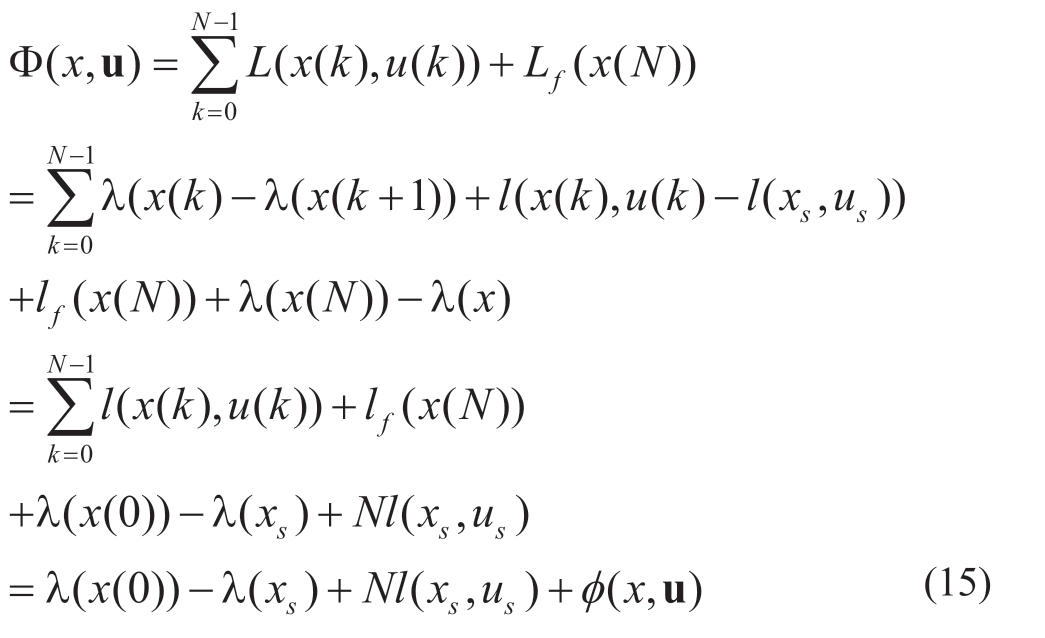
Because Nl ( x s , u s ) +λ( x( 0) ) -λ( xs) has a fixed value,the optimization problem expressed in Eq.(8) and the auxiliary optimization problem expressed in Eq.(13) have the same optimal solution.The system is asymptotically stable under the auxiliary optimization problem expressed in Eq.(13), and thus asymptotic stability of the system could be achieved under the optimization problem expressed in Eq.(8).
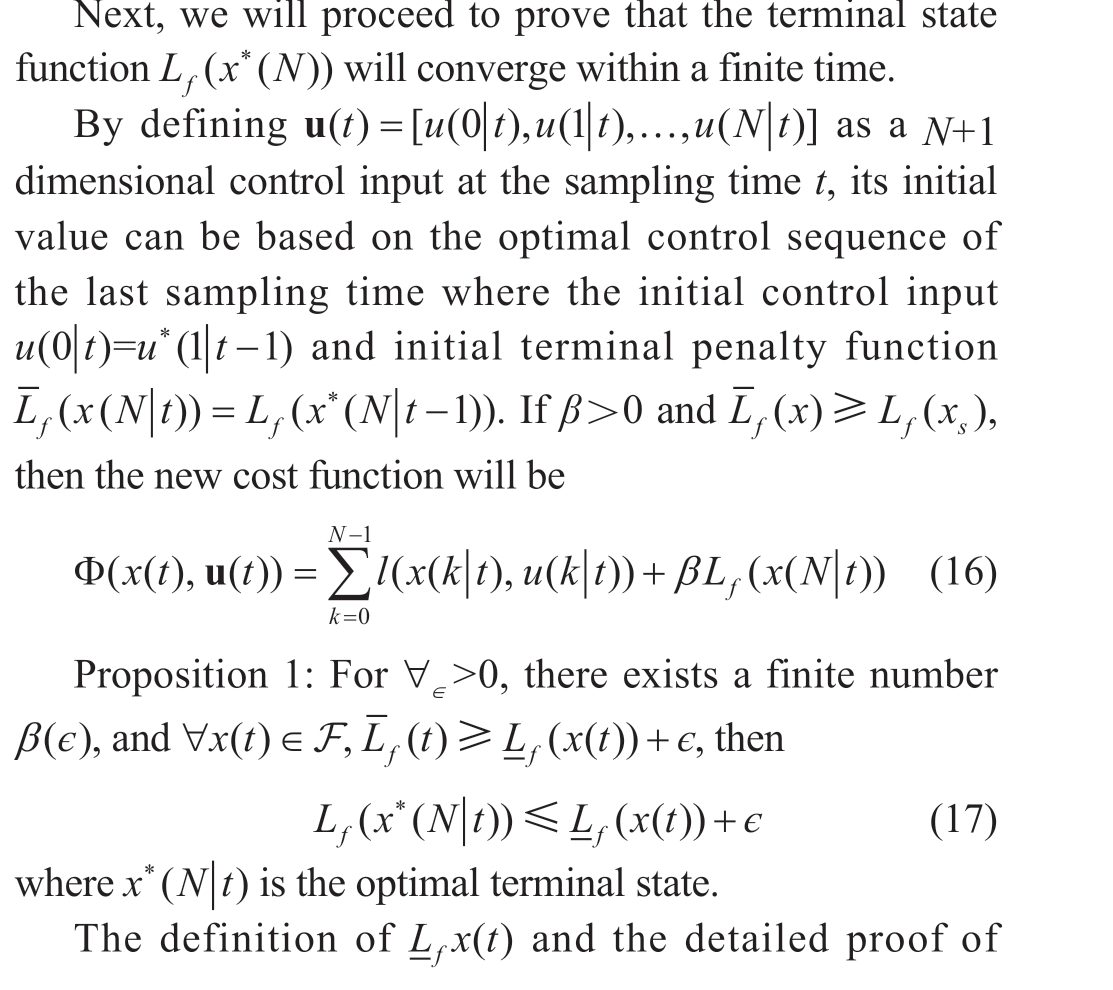
Assumption 2: Forє >0,N is the minimum prediction horizon, and the initial point ∃( x~ , u~) will satisfy the following condition:
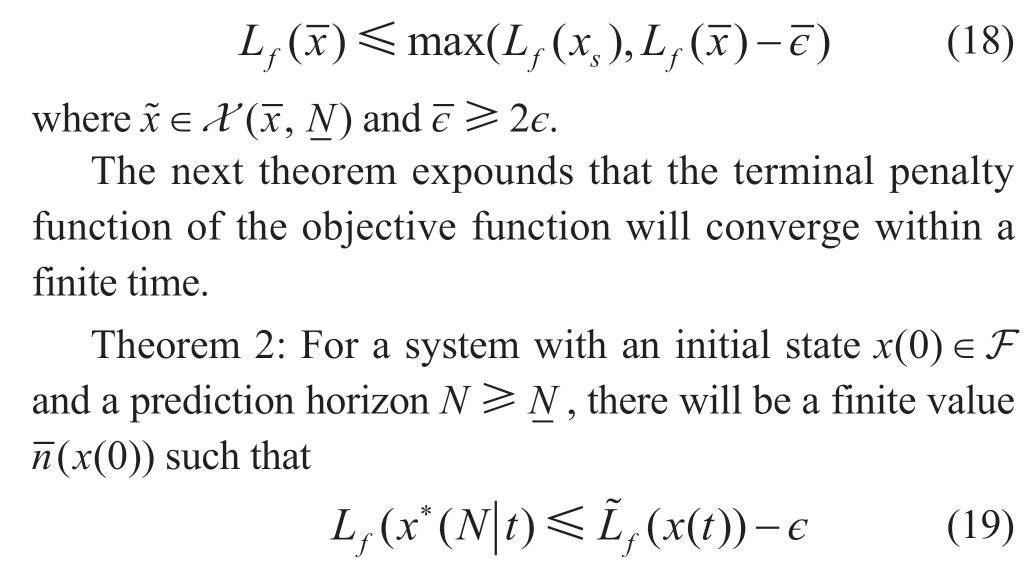
Proof: For x(0)∈F, depending on the system state, the following three cases will apply:
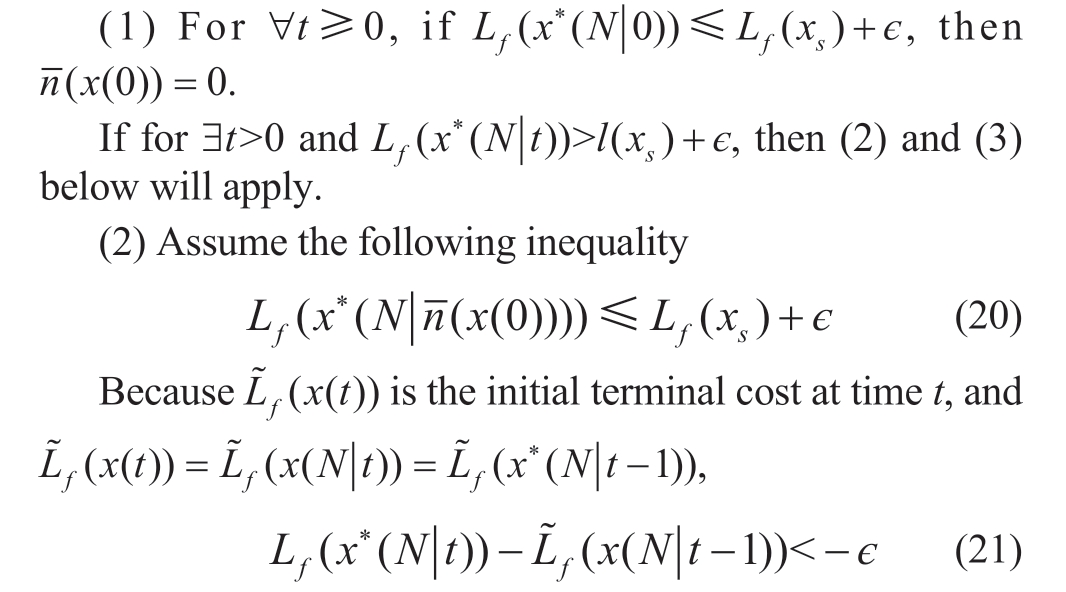
It can be seen from Eq.(21) that the terminal penalty function for the optimal control sequence will decrease at least by є.
(3) Assume the opposite of case (2) indicated below.
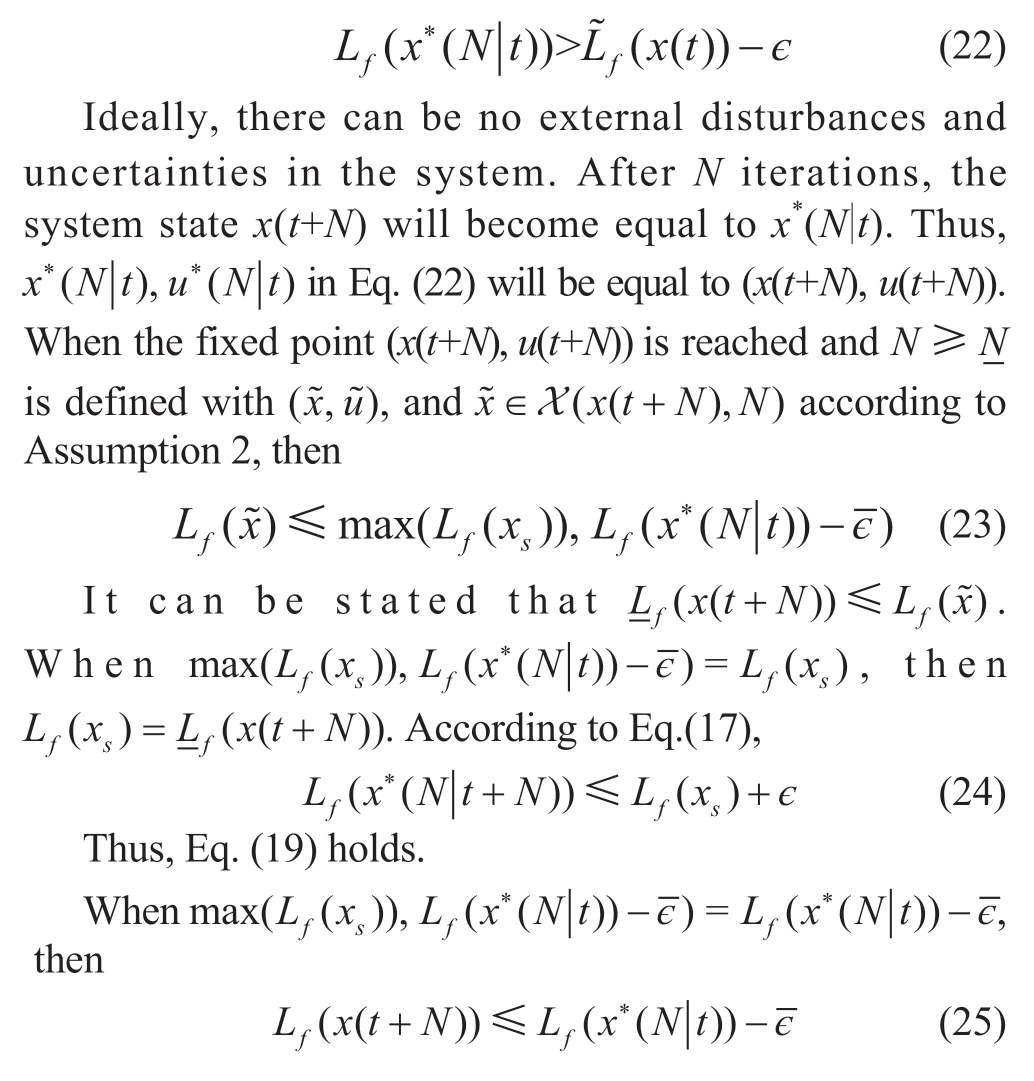

Thus, we can conclude that after N iterations, the terminal cost function will decrease by at least є and that Eq.(19) will be valid for a finite number of iterations.
3 Simulation results
The networked two-area power system described in Fig.1 was simulated.A 1000 MW power plant is used in each area in Fig.2.The sampling interval Ts = 0.1 s and the optimization horizon of economic MPC N = 20.At a sampling time t = 2 s, the load demand increases in the two areas are 0.01 p.u.and 0.005 p.u.Other parameters used in the simulation are shown in Table 1.
In the simulation, frequency regulation and optimal load dispatch of the two-area power system were realized.In Fig.6, the frequency deviation of each area gradually moved toward 0 after the load demand change at t = 2 s.In Fig.7, the power generation of each area is presented.The black dotted line is the result of optimal load dispatch,and the power generation of each area tends to gradually move toward optimal power generation.In Fig.8, the tieline power is presented, and power exchange between the two areas would enable optimal economic power dispatch in the system.The voltage angle will converge to its steadystate value within a short time.In Fig.9, the control input calculated for the economic MPC controller will steer the system toward optimal economic power dispatch.
Table 1 Power system parameters
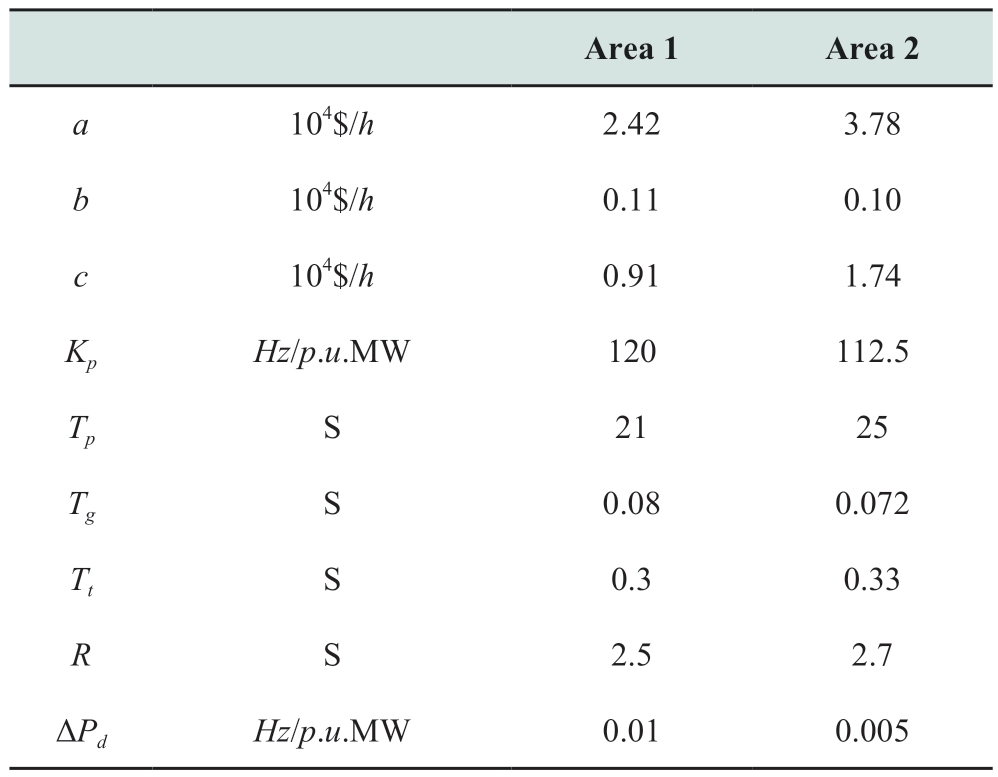
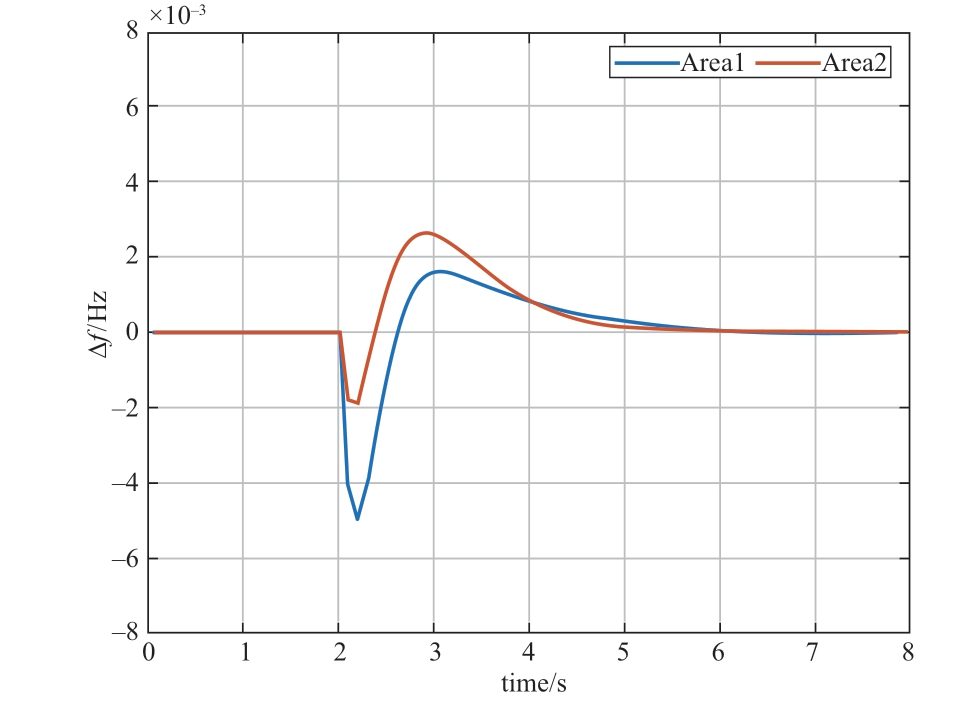
Fig.6 Variation of the frequency deviation, Δf, in the two areas with load demand
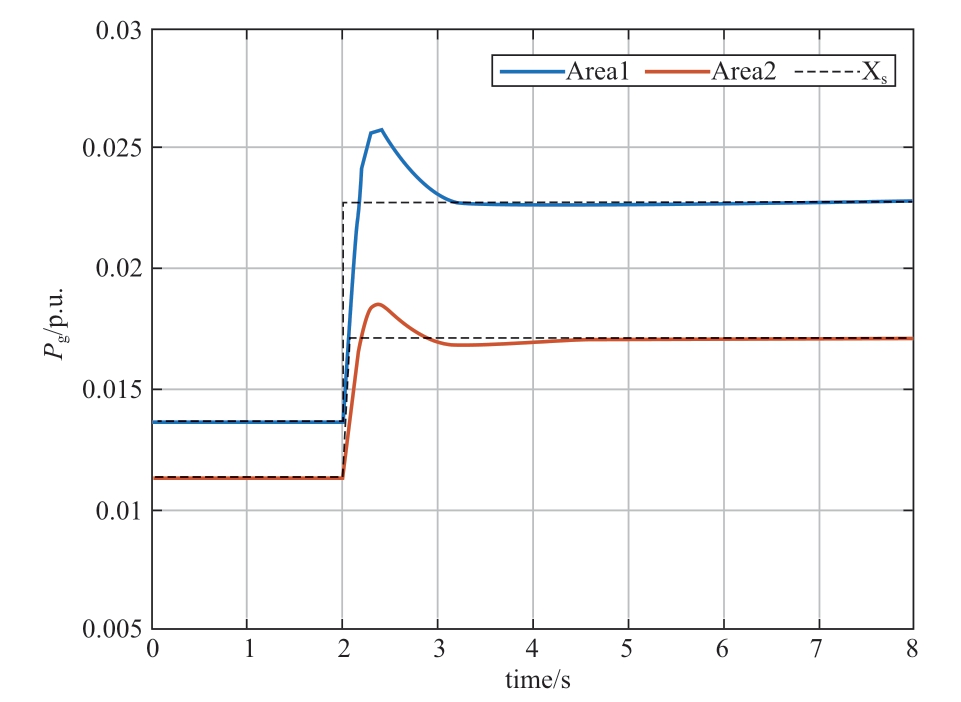
Fig.7 Variation of the power generated, Pg, in the two areas with load demand
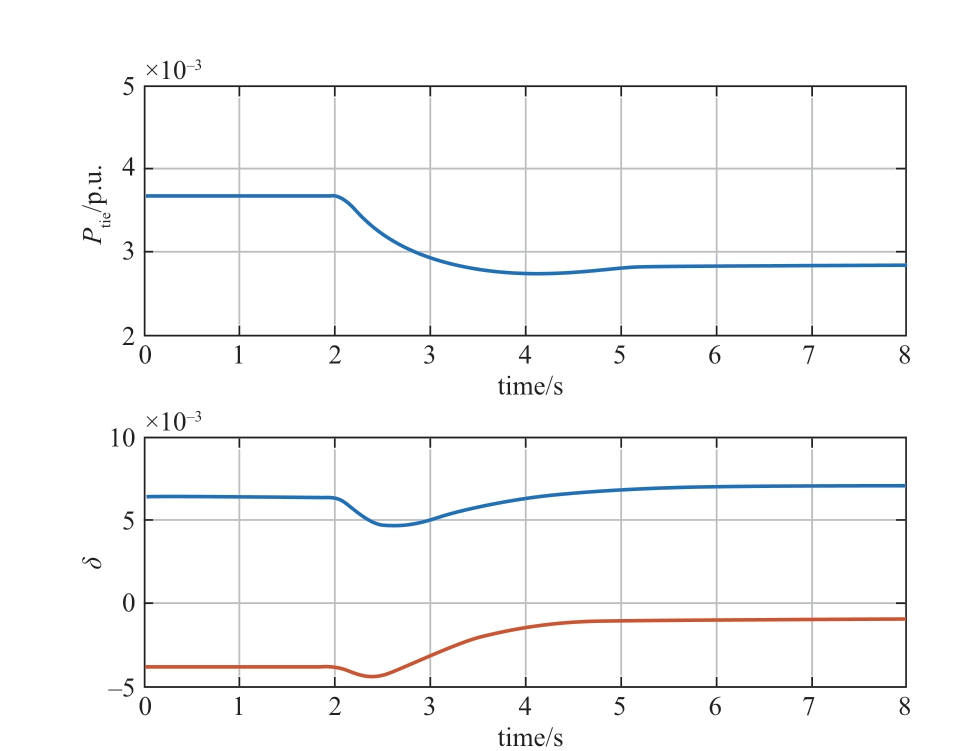
Fig.8 Variation of tie-line power Ptie and voltage angle δ of the two areas with load demand
To demonstrate the performance of the proposed algorithm, its simulation is compared with that of tracking MPC.The objective function of the tracking MPC is
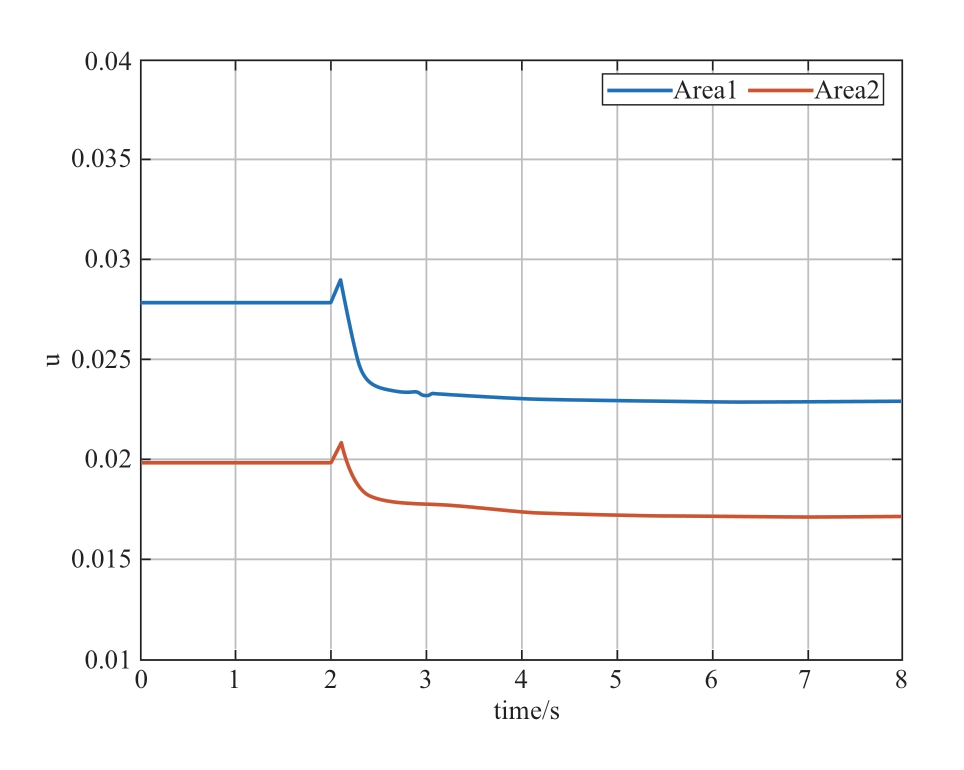
Fig.9 Variation of the control input u of the two areas with load demand
The steady state of the system will be the same as that obtained with economic MPC.The simulation results are shown in Fig.10.The system was found to be more stable with this method.
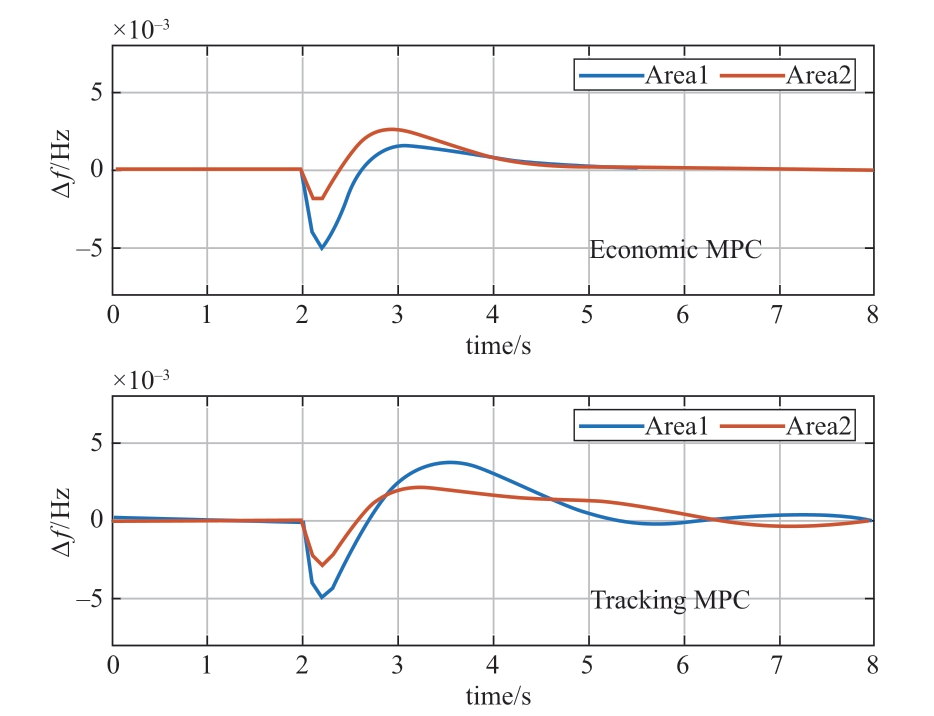
Fig.10 Variation of frequency deviation Δf in each area with time for economic and tracking model predictive control
The finite-time convergence of the system when economic MPC is used is demonstrated in Fig.11.In this simulation, we tested the performance of the finitetime economic MPC controller with different values of the terminal penalty coefficient β: β = 0.1, β = 1, and β = 10.With different terminal penalty coefficients, the system will attain its steady state within a finite time.It can be seen from Fig.10 that with the terminal penalty coefficient β increasing, the frequency deviation of the system approaches the steady state at a fast rate and the convergence time of the system can be dynamically adjusted by using the coefficient β.
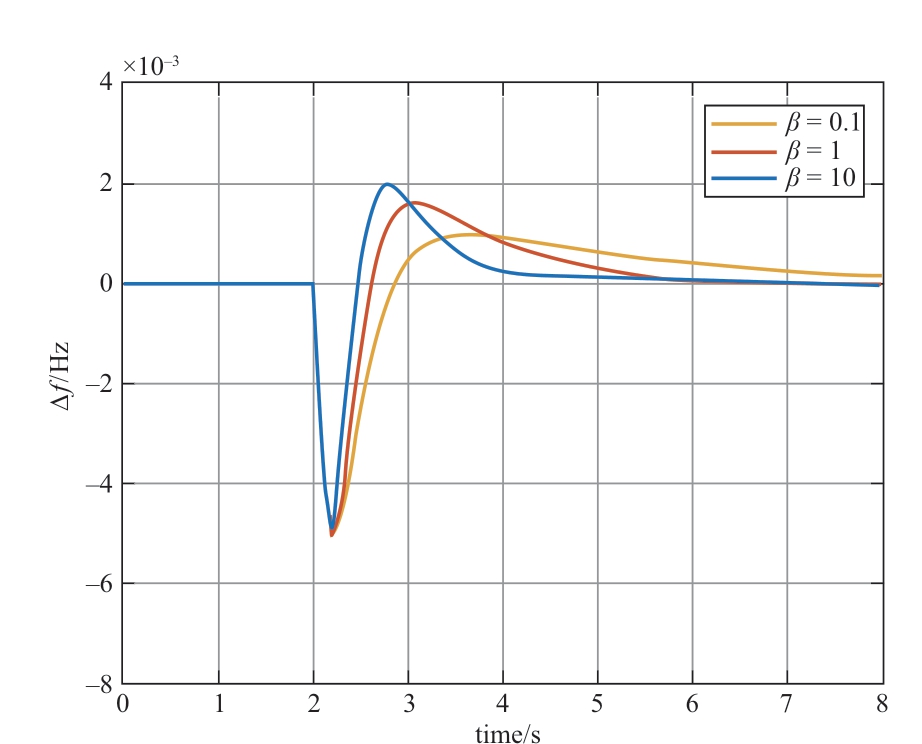
Fig.11 Variation of the frequency deviation Δf in each area with time for terminal penalty coefficient β = 0.1, 1 and 10
4 Conclusion
In this paper, a finite-time economic MPC algorithm is proposed for the load frequency control and optimal load dispatch of a networked two-area power system.The generalized objective function is optimized by an economic MPC controller, and the terminal state of the optimization problem converges to the steady state within a finite time.The effectiveness of the proposed economic MPC algorithm was verified using simulation.
Acknowledgements
This work was supported by the National Natural Science Foundation of China (Grant 62103101), the Natural Science Foundation of Jiangsu Province of China (Grant BK20210217), the China Postdoctoral Science Foundation(Grant 2022M710680), the National Natural Science Foundation of China (Grant 62273094), the "Zhishan"Scholars Programs of Southeast University, the Fundamental Science (Natural Science) General Program of Jiangsu Higher Education Institutions (No.21KJB470020), the Open Research Fund of Jiangsu Collaborative Innovation Center for Smart Distribution Network, Nanjing Institute of Technology (No.XTCX202102), and the Introduced Talents Scientific Research Start-up Fund Project, Nanjing Institute of Technology (No.YKJ202133).
Declaration of Competing Interest
We declare that we have no conflict of interest.
References
[1] Trip S, De Persis C (2017) Distributed optimal load frequency control with non-passive dynamics.IEEE Transactions on Control of Network Systems, 5(3): 1232-1244
[2] Chen G, Feng E (2015) Distributed secondary control and optimal power sharing in microgrids.IEEE/CAA Journal of Automatica Sinica, 2(3): 304-312
[3] Bai T, Li S, Zheng Y (2019) Distributed model predictive control for networked plant-wide systems with neighborhood cooperation.IEEE/CAA Journal of Automatica Sinica, 6(1): 108-117
[4] Deng Z, Xu Y, Sun H, et al.(2018) Distributed, bounded and finite-time convergence secondary frequency control in an autonomous microgrid.IEEE Transactions on Smart Grid, 10(3):2776-2788
[5] Zanon M, Grüne L, Diehl M (2016) Periodic optimal control,dissipativity and MPC.IEEE Transactions on Automatic Control,62(6): 2943-2949
[6] Zhao Y, Cai Y, Song Q (2018) Energy control of plug-in hybrid electric vehicles using model predictive control with route preview.IEEE/CAA Journal of Automatica Sinica, 8(12): 1948-4854
[7] Jia Y, Meng K, Wu K, et al.(2020) Optimal load frequency control for networked power systems based on distributed economic MPC.IEEE Transactions on Systems, Man, and Cybernetics: Systems, 51(4): 2123-2133
[8] Cui J, Chai T, Liu X (2020) Deep-neural-network-based economic model predictive control for ultra-supercritical power plant.IEEE Transactions on Industrial Informatics, 16(9): 5905-5913
[9] Ellis M, Durand H, Christofides P D (2014) A tutorial review of economic model predictive control methods.Journal of Process Control, 24(8): 1156-1178
[10] Chen G, Ren J, Feng E N (2016) Distributed finite-time economic dispatch of a network of energy resources.IEEE Transactions on Smart Grid, 8(2): 822-832
[11] Fagiano L, Teel A R (2013) Generalized terminal state constraint for model predictive control.Automatica, 49(9): 2622-2631
[12] Li C, Yu X, Yu W, et al.(2015) Distributed event-triggered scheme for economic dispatch in smart grids.IEEE Transactions on Industrial informatics, 12(5): 1775-1785
[13] JBJ B R, Mayne D Q (1999) Model predictive control theory and design
[14] Rawlings J B (2000) Tutorial overview of model predictive control[J].IEEE control systems magazine, 20(3): 38-52
Received: 15 August 2022/ Accepted: 6 November 2022/ Published: 25 April 2023
Yubin Jia
yubinjia@seu.edu.cn
Tengjun Zuo
zuotengjun1990@outlook.com
Yaran Li
yaran.li@unswalumni.com
Wenjun Bi
wenjun_bi@njit.edu.cn
Lei Xue
leixue@seu.edu.cn
Chaojie Li
cjlee.cqu@163.com
2096-5117/© 2023 Global Energy Interconnection Development and Cooperation Organization.Production and hosting by Elsevier B.V.on behalf of KeAi Communications Co., Ltd.This is an open access article under the CC BY-NC-ND license (http: //creativecommons.org/licenses/by-nc-nd/4.0/ ).
Biographies

Yubin Jia received the B.S.and M.S.degree in automation, North China Electric Power University, Beijing, China, in 2012 and 2015,and received the Ph.D.degree in the School of Automation, Southeast University, Nanjing,China, in 2020.He is currently a Postdoctoral fellow at Southeast University.His research interests include wind model predictive control, power system, machine learning, and renewable energy system.

Tengjun Zuo received the B.E degree in Electrical Engineering from the Xi'an Jiaotong-Liverpool University, Suzhou, China, in 2013, and the MEngSc and Ph.D.degrees in Electrical Engineering from the University of New South Wales, Sydney, Australia, in 2015 and 2020, respectively.He is currently a lecturer with The Nanjing Institute of Technology.His research interests include wind farm planning,power system, and energy storage system.

Yaran Li received the Ph.D.degree in electrical engineering from the University of New South Wales, Sydney, Australia, in 2021, the B.E.degree in electrical engineering from Southeast University, Nanjing, China, in 2017.She also held industrial positions with TransGrid, Australia as a network planning engineer.Her research interests include microgrid control, renewable connection, and power system stability analysis.

Wenjun Bi received the Ph.D degree from Southeast University, Nanjing, China, in 2022.He is currently working with the School of Electric Power Engineering, Nanjing Institute of Technology.His research interests include power system operation/control and power system security.

Lei Xue received his Ph.D.degree in control science and engineering from Southeast University, Nanjing, China, in 2017.From September 2013 to September 2014, he was a Visiting Ph.D.student with Applied Computational Intelligence Laboratory,Department of Electrical and Computer Engineering, Missouri University of Science and Technology, Rolla, MO, USA.Currently he is an Associate Professor with the School of Automation, Southeast University,Nanjing, China.His research interests include game theory, multiagent system, and optimization control.

Chaojie Li received the B.Eng.degree in electronic science and technology, the M.Eng.degree in computer science from Chongqing University, Chongqing, China, in 2007 and 2011, respectively, and the Ph.D.degree in electrical engineering from RMIT University,Melbourne, Australia, in 2017, where he was a Research Fellow for one and a half year.
(Editor Tongming Liu)
